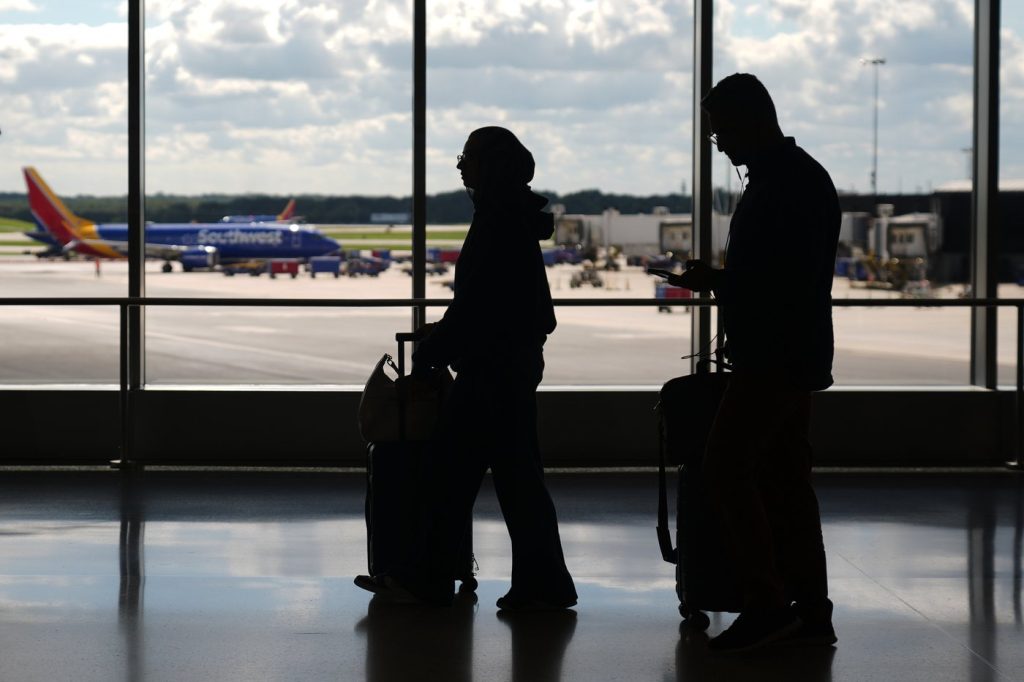A troubling situation emerged as the federal government shutdown commenced on October 1, 2023, with a significant message arising from an air traffic control tower near Los Angeles: “The tower is closed due to staffing.” This closure at Hollywood Burbank Airport lasted nearly six hours on October 6, primarily due to a shortage of air traffic controllers. Consequently, pilots were left to manage communications independently, resulting in average flight delays of two-and-a-half hours—an early indicator of the shutdown's adverse impact on the nation’s aviation system.
Since the shutdown began, the Federal Aviation Administration (FAA) reported controller shortages affecting various U.S. cities, including major airports in Boston and Philadelphia, as well as control centers in Atlanta and Houston. The repercussions extended to numerous airports, with notable delays reported in Nashville, Dallas, and Newark. The Transportation Security Administration (TSA) also noted an increase in unscheduled absences among security screeners at several airports. While the union representing TSA employees indicated that these absences had not yet caused significant disruptions, warnings were made that longer lines at security checkpoints would likely follow after the workers received their final paychecks over the weekend.
Experts and union leaders are highlighting the ongoing vulnerabilities within the aviation system, which has been historically plagued by chronic understaffing and aging technology. The current situation serves as a reminder of the consequences that can arise during prolonged shutdowns, especially as critical aviation employees face delays in receiving their regular pay. Greg Raiff, CEO of Elevate Aviation Group, likened the situation to experiencing a drought following another drought, emphasizing the persistent challenges the industry faces.
These issues are not unprecedented; a similar situation occurred during a 35-day government shutdown in 2019, which was the longest in U.S. history under President Donald Trump. At that time, air traffic controllers worked up to 60 hours a week and ultimately sued the government for unpaid wages. The ramifications of that shutdown included the closure of a terminal at Miami International Airport due to callouts among security screeners, resulting in further operational challenges. Aviation attorney Ricardo Martinez-Cid lamented the failure to address these longstanding issues, stating that the current crisis has made the situation worse despite the warnings that had been issued.
The aviation industry has faced repeated warnings since that shutdown, with a particularly tragic incident occurring in January involving a mid-air collision over the Potomac River that claimed 67 lives. Additionally, 2023 saw a series of equipment failures and radar outages, further underscoring the urgent need for modernization within the aviation system.
Before the current shutdown, both the FAA and TSA were already grappling with staffing shortages. The FAA faced a deficit of approximately 3,000 air traffic controllers, marking staffing levels at a “critical” low—the weakest in decades. Even minor absences among controllers can lead to significant disruptions in operations due to the collective strain on already understaffed facilities. Nick Daniels, president of the National Air Traffic Controllers Association, highlighted the challenges arising from insufficient staffing and unreliable equipment.
The government shutdown has compounded existing staffing shortages at a critical time. The FAA had recently made strides in hiring, surpassing its goal of onboarding 2,000 controllers within the year following improvements to its application process at the academy. However, it remains a lengthy process to completely rectify the shortage, and the shutdown has stalled progress toward essential technology upgrades that could alleviate ongoing operational challenges.
The TSA also faces concerns about the potential exodus of security screeners during this shutdown, especially given the ambiguity surrounding their job security in light of previous threats to their collective bargaining rights. There is apprehension among newer air traffic controllers and trainees about their commitment to the profession, as uncertainty about future shutdowns looms large.
The aftermath of the 2019 shutdown prompted a congressional committee to investigate its impacts. Industry leaders have repeatedly stressed that aviation personnel should not be used as political leverage, emphasizing the need for uninterrupted funding of the FAA. The recurring cycle of shutdowns undermines the stability and safety of the aviation system, leaving it vulnerable to crises nearly seven years later.
In light of these developments, there is a growing consensus that immediate reforms are necessary to ensure that the aviation system can withstand political turbulence without compromising safety or operational integrity.










